PROJECTS SPOTLIGHT
SPOTLIGHTS
Behind the camera with
"Kelsey On The House"
SHOOTING A TV SERIES WITH A DSLR CAMERA (and no budget)…
"Kelsey On The House" appeared on the NBC affiliate COZI and was broadcast to 43 million homes across the country. Brian Kelsey and I wanted the show to have an organic feel… almost sloppy. We wanted to "Break down the fourth wall" and keep the viewer aware that they were watching a production, with things going on behind the camera. That said, we also like high production shots so we employed a variety of shooting styles. You will find some luscious long-lens crane and slider shots mixed in with a lot of shaky hand-held. We even put the venerable GoPro to use as well as throwing in some iPhone shots for texture. In the end, the underlying theme of this project was to create something that was different, that was commercal enough to maybe get picked up by a network, and to keep productions as simple as possible so we could shoot where we wanted and when we wanted.
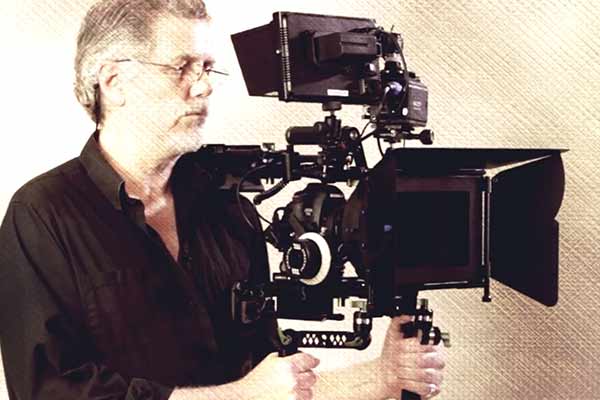
Director Matt Abourezk
Before we started production of "Kelsey On The House" (KOTH), I made a decision to shoot the entire series with DSLR cameras. The Canon 5D Mark III had recently been released which provided a new benchmark for affordable DSLR quality. Since I am also a professional still photographer, I thought the Mark III would be a logical purchase. After a lot of shooting (both Still and Video), I'm thrilled with the performance of this camera.
One Man Band
Okay, admittedly I am trying to do everything possible to create a quality TV series while pocketing as much of the meager income as possible. So I have been refining my DSLR rig to be extremely versatile while giving me the ability to monitor the quality of the production. At times I feel like a one-man-band with the big bass drum on my back and cymbals between my knees, but I have been surprised at how much quality I have been able to maintain in the absence of a crew behind me.
I went into this project knowing that a DSLR is not the most efficient camera for run and gun shooting, not by a long-shot. That said, I also knew that I needed to get the most cinematic look possible with a limited budget (you might be surprised as to how much money you AREN'T paid for a new TV series). Since I already owned a lot of Canon L-series glass, I decided to stick with Canon and shoot with the DSLR.
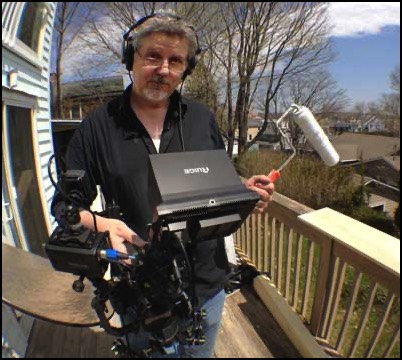
Glass - Glass - Glass
Brian Kelsey and I have worked together on a few TV pilots so we know that we share similar creative directions. We both love the wide angle lens and shallow depth of field. My choice for a "branded" look to the footage is the Canon 17-40 F4 L-series lens. This lens gives me a great combination of creative and logistical options. (I avoid shooting super close-ups in the wider range of the lens because it is too distorted and abstract.) Keeping in mind that our TV series often has a "Run-n-Gun" pace to it, focussing a DSLR while shooting video on the run is very difficult. The 17-40 gives me the ability to shoot with a narrow depth of field when I need it, but more importantly (because it is a wide angle) I get a lot more DOF latitude for the run-n-gun stuff. Shooting at about 28mm or above and positioning the camera a bit closer to the action gives a nice softness to the background. When I'm not shooting with the 17-40, I'm using the incredible Canon 70-200 f2.8 L-series II. Mostly, I'm using this lens as an effect for when I want to do some dramatic shallow depth of field work.
Getting the most out of your crew… uhh… your SELF.
On some of my projects I have as many as 40 people working for me behind the camera. In those increasingly rare situations, I get to be the director and have a PA make sure my drinking water is just the right temperature (just kidding). But in this economy, we have all had to learn to work smarter in order to stay in business. In the spirit of saving production money, I have gotten the chance to rekindle my first love; being the Director of Photography. It also means that I'm often wearing the hat of just about every title in a typical production crew. As such, I've been learning a lot about ways to streamline the production process. Buying carefully researched tools-of-the-trade that allow my time to be more productive. So I'll share some of my thoughts and purchases with you. Hopefully this will help you to not make the mistakes I made.
FOLLOW FOCUS
After a lot of research (and a huge mistake of buying a Konova FF), I bought the Lanparte follow focus II, which is silky smooth, has absolutely no backlash, and has two hard stops which allow me to set my start and stop focus before the take so I don't have to worry about hitting my mark while shooting. There are quite a few companies making Follow Focus rigs these days. Many are way too expensive, and many are way too cheaply constructed. For me, the Lanparte FF II is the Goldilocks follow focus. Priced right and incredibly good quality. If you are looking to buy a follow focus, the biggest single factor for consideration is backlash. This is the "dead space" from the moment you turn the knob to the moment your lens starts to move. The Konova Follow Focus that I had purchased had about ⅜" of backlash. I couldn't see why that little amount of backlash would be a problem and the price seemed right…. until I actually tried to use it on a shoot. Then my opinion changed dramatically. After one shoot I decided to buy a new FF and ended up with the Lanparte.
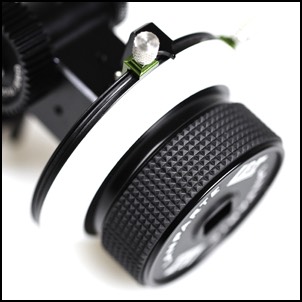
AUDIO
I started the series with the Zoom H4N (as seen in the top image in this page), but as soon as I got a look at the Tascam DR-60D, I jumped ship on the Zoom. IF NOTHING ELSE, the DR-60 has both a headphone jack AND a camera out jack to feed high quality audio to my camera. But the main thing I love is that the Tascam has a slate tone generator that I can push between takes (sending the tone to both the CF card AND the camera) which greatly simplifies syncing the audio and video in post. I absolutely love the DR-60 for about a thousand reasons (Peak lights anyone?). The Zoom H4n has been good to me for the past few years, but this Tascam DR-60d has dramatically improved my ability to capture great audio, as well as speeding up the sync process in post.
Also, I have a Sennheiser wireless G-3 series 300 kit. Two body pack transmitters, two receivers, lapels, hand held, etc. Wireless audio is essential to the one-man-band. Mic your talent, set your levels, and shoot.
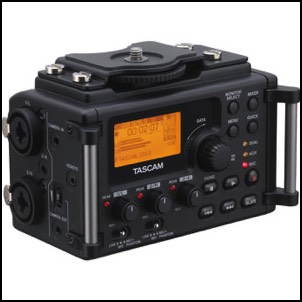
HANDLES
This may seem like a sorta-non-issue, but it is huge. My DSLR rig is not incredibly light and after a horrible experience with Konova handles (now sold by Digital Juice), I found and bought one of the coolest handle sets on the face of the planet. Again, a Lanparte product (No, I do not have a Lanparte sponsorship, as much as I wish I did). These handles are exceptionally strong, attach quickly and firmly, are hugely adjustable, and are relatively light in weight. I also have a Lanparte top handle. Not only do the handles stabilize your shooting, you will be surprised how many times you rely on the handles as maneuver and manage your rig in general. I spend half of my day with one hand reaching for the camera, follow focus, or audio. The handle set needs to be extremely secure so you don't drop your rig during those times where you don't have both hands on. I tried a number of cheaper handle sets and they never locked down enough, or they were not versatile enough. The Lanparte handles are simply incredible and beautifully engineered.
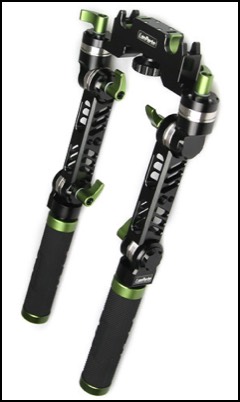
CAMERA SUPPORT
Many options to discuss regarding tripods, heads, etc. But I want to just mention a few things to dramatically improve the quality of your productions. 1) Jib and 2) Slider.
I use the Kessler Pocket Jib and the Cineslider. I've tried other rigs (quite a few actually) but the Kessler products just feel right. They are not the cheapest (nor are they even close to being the most expensive), but they seem to be the best quality at their price point. The Pocket Jib is a bit misleading as a name, this thing is robust and heavy. Yes, I can load it in the van, get it to location, and set it up myself, but you feel it afterward. Not a task for the faint of heart, but completely doable. I am getting ready to buy the Kessler Pocket Jib Traveler which is quite a bit smaller and easier for a single shooter. It doesn't have the options and overall stability of the Pocket Jib, but it will do the job for about 80% of the shots that I need in the Tv series. The Cineslider instantly improves any shot that you would otherwise shoot statically… plain and simple. If I am not using a jib in a shot, and if I'm not handholding, I am using the cineslider. I rarely shoot statically from a tripod anymore.
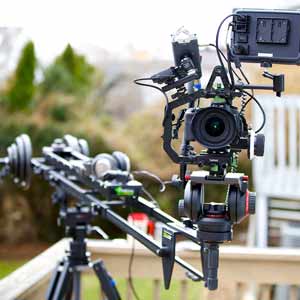
POST PRODUCTION
I edited the TV episodes in Final Cut Pro X, with graphics and animations created in After Effects and Apple Motion. Music was provided by multiple online sources as well as my writing a few pieces in Apple Logic.
Our show aired on NBC in late 2013 and reached 43 million homes. The credits at the end of the shows are quite funny with Brian and I appearing for almost all of the production and post-production job titles. If you would like to see one of the episodes, it is posted to this website HERE.
Have fun and thanks for reading this far.
Matt
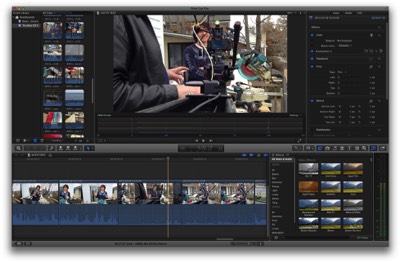
(203) 249-7718
email: matt@talkingboxdmg.com
© Copyright 2023 by Matthew C. Abourezk & Talkingbox DMG, LLC • All rights reserved • Located in Bridgeport, CT
Privacy Policy
Site Map